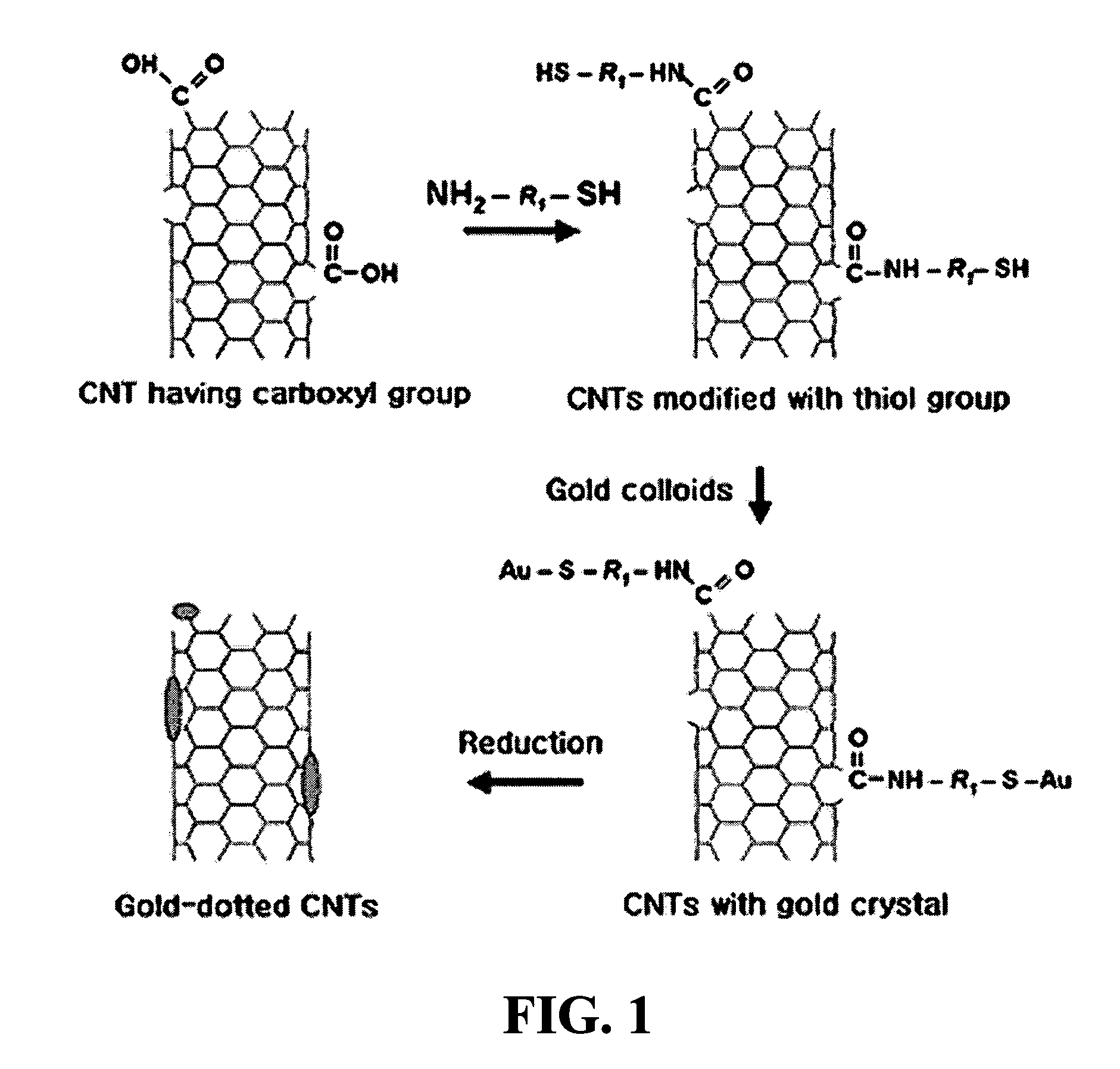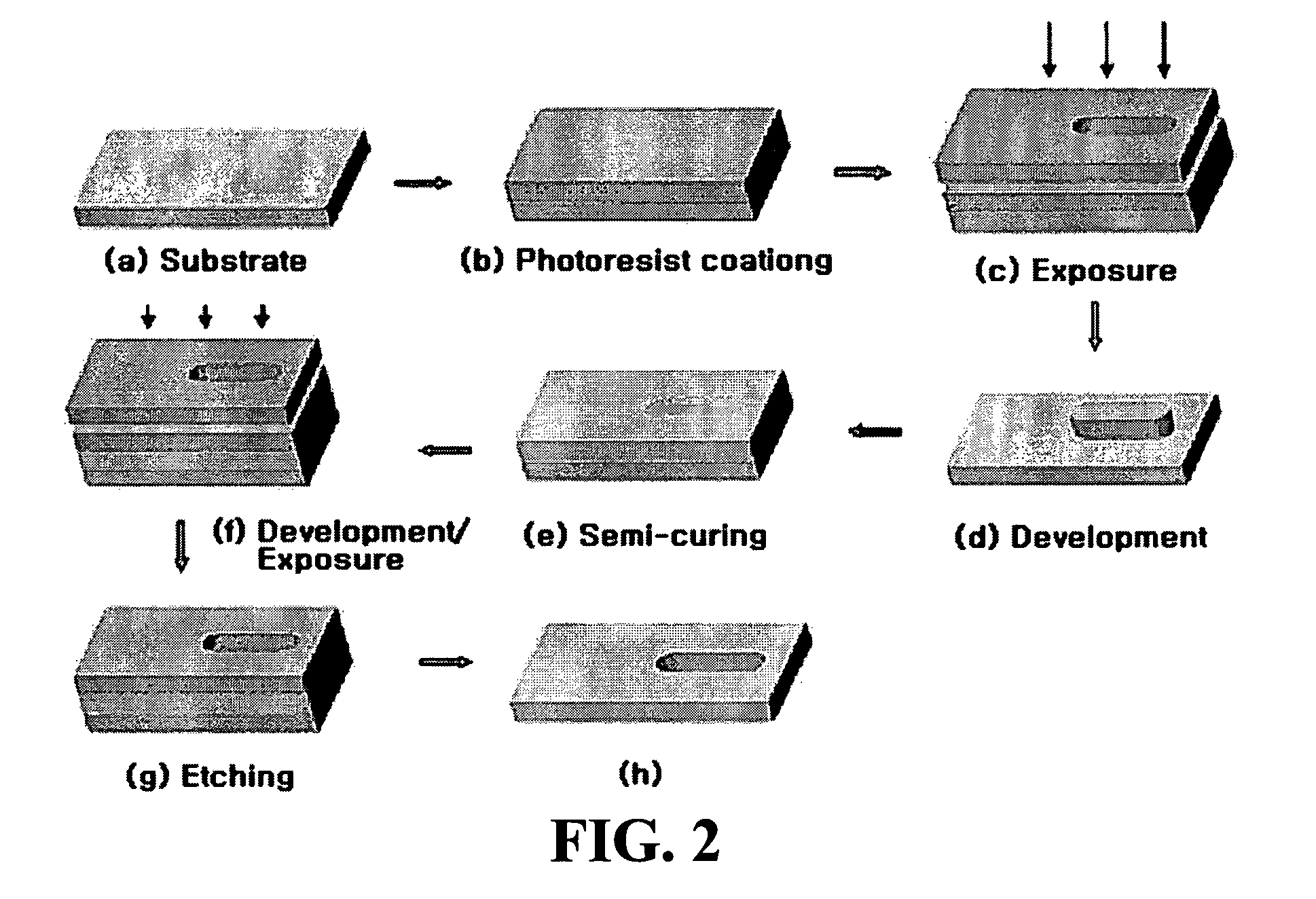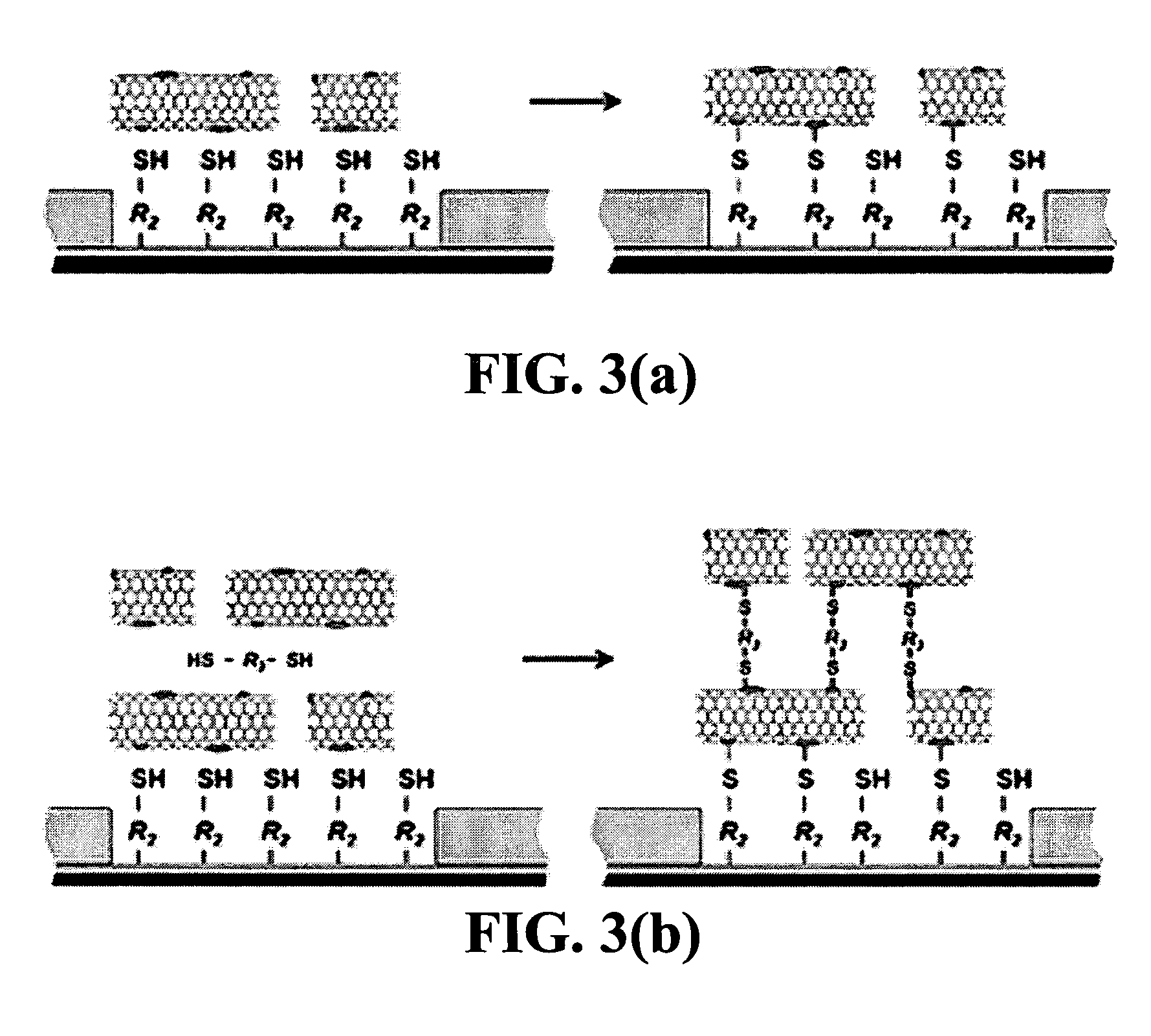Conductive carbon nanotubes dotted with metal and method for fabricating a biosensor using the same
a technology metals, which is applied in the field of conductive carbon nanotubes, can solve the problems of low cnt surface density and weak bonding, and the patterning method for selective immobilization on the surface cannot be applied, and the classical technique based on protein function analysis and network analysis data cannot be applied, and achieves excellent electrical conductivity and high surface density.
- Summary
- Abstract
- Description
- Claims
- Application Information
AI Technical Summary
Benefits of technology
Problems solved by technology
Method used
Image
Examples
example 1
Production of CNTs Dotted with Gold (Au)
[0106]Single walled carbon nanotubes (SWNTs) were cut with a strong acid and then the resulting CNTs having carboxyl functional groups were subjected to oxidation-reduction reaction in a two-phase liquid-liquid system, to produce CNTs dotted with gold nanoparticles (FIG. 1).
[0107]First, by aid of a coupling agent (DCC) in an ethanol solvent, a linker (2-aminoethanethiol) having both amino (—NH2) and thiol (—SH) functional groups was stirred with the CNTs having carboxyl functional groups at ambient temperature for about 24 hours. Gold nucleation sites were formed at the binding locations on the end and side of the CNTs by Au-S chemical bonds.
[0108]25 ml of 0.01% gold colloidal solution that is light yellow in color was charged into a glass reactor, to which a solution of 16.5 ml (0.01665 mmol) of N(C8H17)4Br in toluene was then added slowly while stirring the gold colloidal solution rapidly. In this reaction, a phase separation between water a...
example 2
Detection of DNA Hybridization Reaction Using CNT Dotted with Gold
[0113]Thiol group-containing DNAs or oligonucleotides bind specifically to gold nanocrystals dotted on the wall surface of a CNT, to form a CNT-Au-DNA complex (FIG. 12a). The oligonucleotide-bound CNT was immobilized on a glass slide (Shin-Won Scientific Co. Ltd., Korea) treated with poly-L-lysine, in the same manner as in the fabrication of DNA chips (Schena, M. et al., Science 270:467, 1995).
[0114]The oligonucleotide-bound CNT of the following SEQ ID NO: 1 was filtered several times through a 0.2 μm Teflon filter to remove unreacted oligonucleotides. After the filtration, the oligonucleotide-bound CNT solution was concentrated with a centrifuge.
[0115]5′-TGT GCC ACC TAC AAG CTG TG (C3)-thiol-3 (SEQ ID NO: 1)
[0116]10 μl of the concentrated oligonucleotides were dropped onto the glass substrate treated with poly-L-lysine by a pipette, and then dried at ambient temperature for at least 12 hours. Next, the resulting subs...
PUM
| Property | Measurement | Unit |
|---|---|---|
| pore size | aaaaa | aaaaa |
| pH | aaaaa | aaaaa |
| pH | aaaaa | aaaaa |
Abstract
Description
Claims
Application Information
 Login to View More
Login to View More - R&D
- Intellectual Property
- Life Sciences
- Materials
- Tech Scout
- Unparalleled Data Quality
- Higher Quality Content
- 60% Fewer Hallucinations
Browse by: Latest US Patents, China's latest patents, Technical Efficacy Thesaurus, Application Domain, Technology Topic, Popular Technical Reports.
© 2025 PatSnap. All rights reserved.Legal|Privacy policy|Modern Slavery Act Transparency Statement|Sitemap|About US| Contact US: help@patsnap.com



